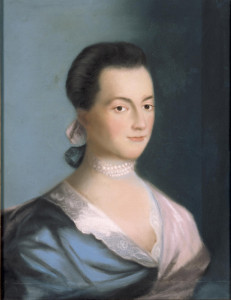How Spanx Shapes Women’s History
Dear Readers and Leaders,
It’s Women’s History Month and I have a personal question:
Are you wearing Spanx? Me too. And yes, there is a connection.
In the 1970s, feminist leader Betty Friedan urged women to throw away their girdles and we cheered. Today, Sarah Blakely has become one of the few female billionaires by getting us trussed up once again—in Spanx.
I’m personally grateful for Spanx. I own up to getting a feel-good dopamine rush when I’m complimented on how I look, and I understand that adornment of the body is a cultural and artistic phenomenon that extends to men as well as women.
Still, I see our transition from girdles to Spanx, from Earth Shoes to 7-inch heels, from questioning leg-shaving to enduring the torture of bikini-waxing, as a metaphor for the many times in history women have taken giant steps forward only to take a step back of our own accord.
The roller-coaster ride to equality
American women have collectively been on a roller-coaster ride toward equality since 1776, when Abigail Adams asked her husband John to “remember the ladies.” She threatened revolution if he and the other men drafting the new nation’s Constitution failed to do so.
“Do not put such unlimited power into the hands of the husbands,” she implored. It was probably unthinkable even to her that single women should enjoy the same freedoms.
John laughed at Abigail’s request and the founding fathers gave women not so much as a word in the new document that supposedly affirmed liberty for all. Even slaves were accorded the status of 2/3 of a person.
Sadly, the ladies did not foment revolution. It’s a pattern often repeated by women: a habit of taking the boniest parts of the chicken and leaving the meatier parts for others to feast upon.
Yet women have been everywhere, giving birth to everyone, and are too often invisible. How many women did you learn about in high school history classes? Bet you can count them on one hand without using all your fingers.
Who is written into history?
One consequence of women stepping back is that women have been all but written out of history. Take the story of Sybil Luddington. At age sixteen, on April 26, 1777, Sybil rode through towns in New York and Connecticut and gathered enough volunteers to beat back the British army the next day. Her ride was twice as long as Paul Revere’s. Yet, unless you live in the small Connecticut town named for her, it’s doubtful you’ve ever heard of her.
The 1848 Seneca Falls meeting put women’s equality front and center. A decade later, women voluntarily took a back seat to abolitionism within the social justice panoply.
Women would not get the right to vote for 144 years after independence was declared.
Indeed, until June 26, 1918, the Texas constitution specifically said that anyone could vote except idiots, imbeciles, aliens, the insane, and women. (Many today would aver that my home state is heading back to that future.)
When the women’s suffrage movement resurged in the late 19th Century, they refused to take on other social justice issues. But in arguing that it didn’t matter how women voted—they simply wanted women to have the right to vote—the movement lost steam. After the 19th amendment granting women’s suffrage was ratified in 1920, instead of consolidating around their historic agenda to fight for peace, childcare, workplace safety, birth control, or public health, the movement morphed into neutral voter education programs.
The 1940s saw Rosie the Riveter doing previously all-male work, only to trundle back to the kitchen when the men returned from war. Then second-wave feminism opened many doors and enabled women to have so many firsts that it is easy to think that all our problems have been solved.
But now many well-educated, professional women step back from their careers in the belief that having choices means they have no responsibility to continue pushing forward.
When I was researching my book No Excuses, I was shocked to find that it’s no longer so much external structural barriers, real though they are, but internal ones that make the difference in whether women seek public office, promotions, and higher compensation.
Which brings me back to Spanx: the fashion industry has a lot to lose if we suddenly embrace the power of being satisfied with ourselves as we are—if we believe that the locus of power is inside our deepest self, not in the eyes of those who gaze upon us.
And if we’re still not satisfied even after our lumps and bumps are squeezed into Spandex, could it be that earning 78 cents to a man’s dollar makes some of us just a tad testy?
We can’t overlook barriers that make sexism a continuing injustice. Still, the doors to power in all arenas, if not wide open, are at least sufficiently ajar that unlimited possibilities beckon.
But until we understand and redefine our relationship with power, we will stay stuck in our half-finished revolution.
So wearing Spanx or not, my real questions to you are: Will we use No Excuses Power Tool #1: Know your history and you can create the future of your choice? Will we collectively commit to achieving Take The Lead’s goal of leadership parity by #25not95?
Next week, I’ll continue the story of women’s often-interrupted path to equality. Meanwhile please share your thoughts on women’s history and tell us about the future of your choice.
About the Author
Gloria Feldt, Co-Founder and President of Take The Lead, is the author of No Excuses: 9 Ways Women Can Change How We Think About Power. She teaches "Women, Power, and Leadership" at Arizona State University and was named to Vanity Fair's Top 200 women Legends, Leaders, and Trailblazers.

